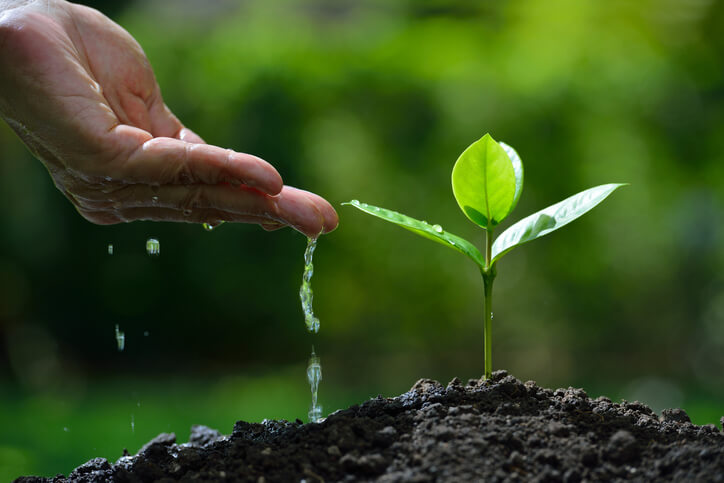Developing cities like Seattle are so much more beautiful with greenery amid tightly populated concrete landscapes, but how long does it take for a tree to grow? Tree-planting drives and seeding activities offer myriad benefits, and Lineage Tree Care is proud to be a part of it. Below, our tree service professionals share more about the stages and challenges of growing trees.

Tree Growth Stages
How long does it take to grow a tree? It’s best to start with the three growth stages of plants, trees, and other flora for an accurate estimate.
Stage 1: Seed Germination
All seeds need moisture, fertile soil, and warmth to germinate. Rainwater and humidity will seep into the ground to soften the seeds’ hard shells and form roots. They absorb the nutrients from the soil and show a few green sprouts after one to three weeks.
Stage 2: Seedling and Sapling Stage
The seedling will absorb moisture from the air and nutrition from the ground, interacting with the local ecosystem, wildlife, and weather. For arborists, this is often the most visually pleasing stage. Successful germination brings great rewards.
A sprout over three feet is called a sapling, and some trees grow faster than other tree species with long lifespans. Oaks or yews may stay saplings for up to six years.
Stage 3: Mature or Fruit-Bearing Tree
How long do trees take to grow? In videos, seedling growth is almost always on time-lapse. It requires a lot of patience and the right conditions; when your sapling exceeds 10 feet in height, you can call it a full-fledged tree.
How long does it take for a tree to fully grow or produce fruit? Typically, a mature tree will begin producing flowers and fruit a few years after it exceeds 10 feet. Trees with long lifespans, such as the oak, can grow for up to thirty years before producing a single acorn.
Tree Growth Factors
How long does it take a tree to grow in Seattle? The following factors affect the process, no matter the location:
- Growth is faster with plenty of sunlight
- Tree species with longer lifespans grow slower
- Seeds that germinate in early spring or late autumn may sprout faster
- Overwatering can stunt tree growth
- Insufficient soil nutrients leave a seedling dormant or produce dwarfed trees
- Invasive insects like beetles lay eggs inside young tree tissues and kill saplings
- Certain microorganisms ruin root sections and result in smaller trees
How to Make Trees Grow Faster
We find that people who ask, “How long does it take for trees to grow?” want to measure the time between planting and harvesting. Our leading tree care company in Seattle advises that you:
- Water seedlings and saplings whenever the soil feels dry
- Use ten gallons of clean water for every inch of the tree’s diameter
- Expose the tree to the sunlight (at least six hours daily)
- Protect saplings with fencing to keep wildlife, electric trimmers, and lawnmowers away
You can also introduce urea fertilizer or coffee grounds every two weeks, activating the benefits with 0.25 inches of water.
Are You Ready to Plant and Grow Trees?
Our five-star tree service professionals would be happy to tell you more about how trees can protect you from direct sunlight, wind, pollen, and dust. How long does it take for a tree to grow? Contact Lineage Tree Care at 425-800-8032 today to find out.
